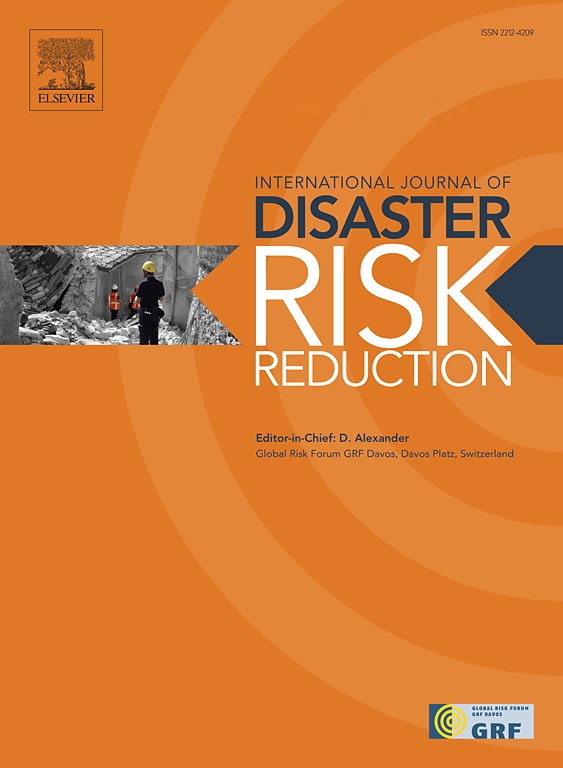An earthquake rapid warning system for railway bridges
IF 4.2
1区 地球科学
Q1 GEOSCIENCES, MULTIDISCIPLINARY
International journal of disaster risk reduction
Pub Date : 2025-04-08
DOI:10.1016/j.ijdrr.2025.105473
引用次数: 0
Abstract
In Italy, railway networks are highly spread and often connect densely populated urban centers and historical cities more effectively than road networks, playing a key role in everyday economic and social life. However, the whole Italian territory is prone to seismic hazard and the seismic risk of Italian critical infrastructures, such as railway networks, is of increasing research interest. The seismic risk of railway networks can be efficiently reduced through emergency management strategies that leverage earthquake warning systems to reduce the social and economic losses induced by the seismic events. Alternative methodologies and applications of warning systems exist, and one of the main differences is the length of the time window in which the warning is issued. In an earthquake early warning system, alerts are issued before the damaging seismic waves reach the protected site. Conversely, rapid warning systems conduct damage estimations immediately after the earthquake occurs to mitigate potential subsequent losses associated with unsafe network operation or unnecessary service interruption. This study develops a railway rapid warning system which is applied to a case study viaduct managed by the Ente Autonomo Volturno (EAV) agency, in southern Italy. Particular attention is dedicated to the decisional stage of the warning protocol that involves an economic-loss minimization strategy based on a multi-cost analysis, which accounts for the urban context and includes the structural damages and the environmental consequences. The system, implemented as a prototype, is able to inform about the viaduct state by updating a dedicated web page, and/or sending e-mail and SMS. The provided information includes the estimation of the damage level induced by an earthquake, and the identification of the seismic risk mitigation actions to be activated.
求助全文
约1分钟内获得全文
求助全文
来源期刊

International journal of disaster risk reduction
GEOSCIENCES, MULTIDISCIPLINARYMETEOROLOGY-METEOROLOGY & ATMOSPHERIC SCIENCES
CiteScore
8.70
自引率
18.00%
发文量
688
审稿时长
79 days
期刊介绍:
The International Journal of Disaster Risk Reduction (IJDRR) is the journal for researchers, policymakers and practitioners across diverse disciplines: earth sciences and their implications; environmental sciences; engineering; urban studies; geography; and the social sciences. IJDRR publishes fundamental and applied research, critical reviews, policy papers and case studies with a particular focus on multi-disciplinary research that aims to reduce the impact of natural, technological, social and intentional disasters. IJDRR stimulates exchange of ideas and knowledge transfer on disaster research, mitigation, adaptation, prevention and risk reduction at all geographical scales: local, national and international.
Key topics:-
-multifaceted disaster and cascading disasters
-the development of disaster risk reduction strategies and techniques
-discussion and development of effective warning and educational systems for risk management at all levels
-disasters associated with climate change
-vulnerability analysis and vulnerability trends
-emerging risks
-resilience against disasters.
The journal particularly encourages papers that approach risk from a multi-disciplinary perspective.
 求助内容:
求助内容: 应助结果提醒方式:
应助结果提醒方式:


